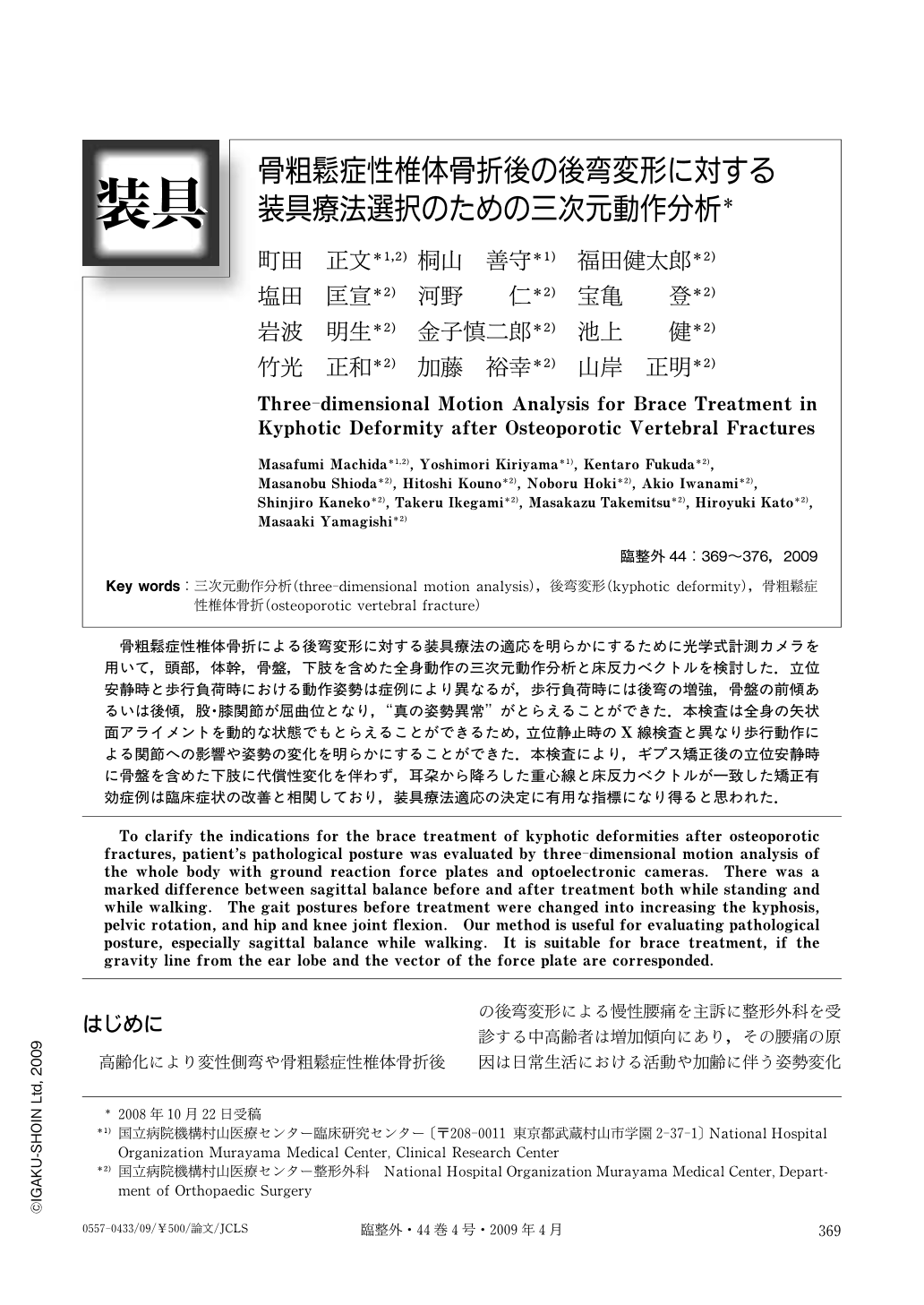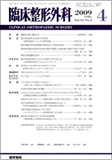Japanese
English
- 有料閲覧
- Abstract 文献概要
- 1ページ目 Look Inside
- 参考文献 Reference
骨粗鬆症性椎体骨折による後弯変形に対する装具療法の適応を明らかにするために光学式計測カメラを用いて,頭部,体幹,骨盤,下肢を含めた全身動作の三次元動作分析と床反力ベクトルを検討した.立位安静時と歩行負荷時における動作姿勢は症例により異なるが,歩行負荷時には後弯の増強,骨盤の前傾あるいは後傾,股・膝関節が屈曲位となり,“真の姿勢異常”がとらえることができた.本検査は全身の矢状面アライメントを動的な状態でもとらえることができるため,立位静止時のX線検査と異なり歩行動作による関節への影響や姿勢の変化を明らかにすることができた.本検査により,ギプス矯正後の立位安静時に骨盤を含めた下肢に代償性変化を伴わず,耳朶から降ろした重心線と床反力ベクトルが一致した矯正有効症例は臨床症状の改善と相関しており,装具療法適応の決定に有用な指標になり得ると思われた.
To clarify the indications for the brace treatment of kyphotic deformities after osteoporotic fractures, patient's pathological posture was evaluated by three-dimensional motion analysis of the whole body with ground reaction force plates and optoelectronic cameras. There was a marked difference between sagittal balance before and after treatment both while standing and while walking. The gait postures before treatment were changed into increasing the kyphosis, pelvic rotation, and hip and knee joint flexion. Our method is useful for evaluating pathological posture, especially sagittal balance while walking. It is suitable for brace treatment, if the gravity line from the ear lobe and the vector of the force plate are corresponded.

Copyright © 2009, Igaku-Shoin Ltd. All rights reserved.


